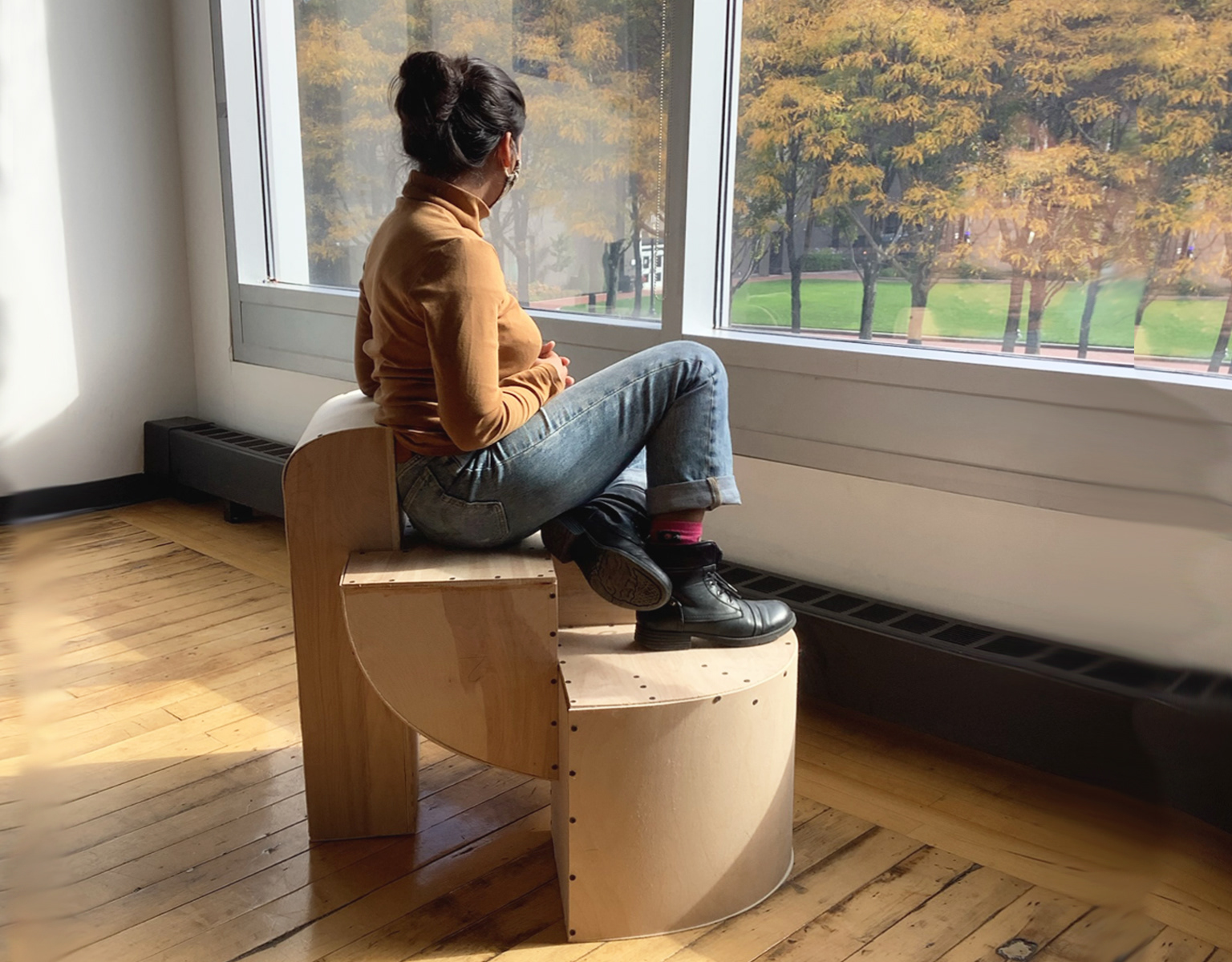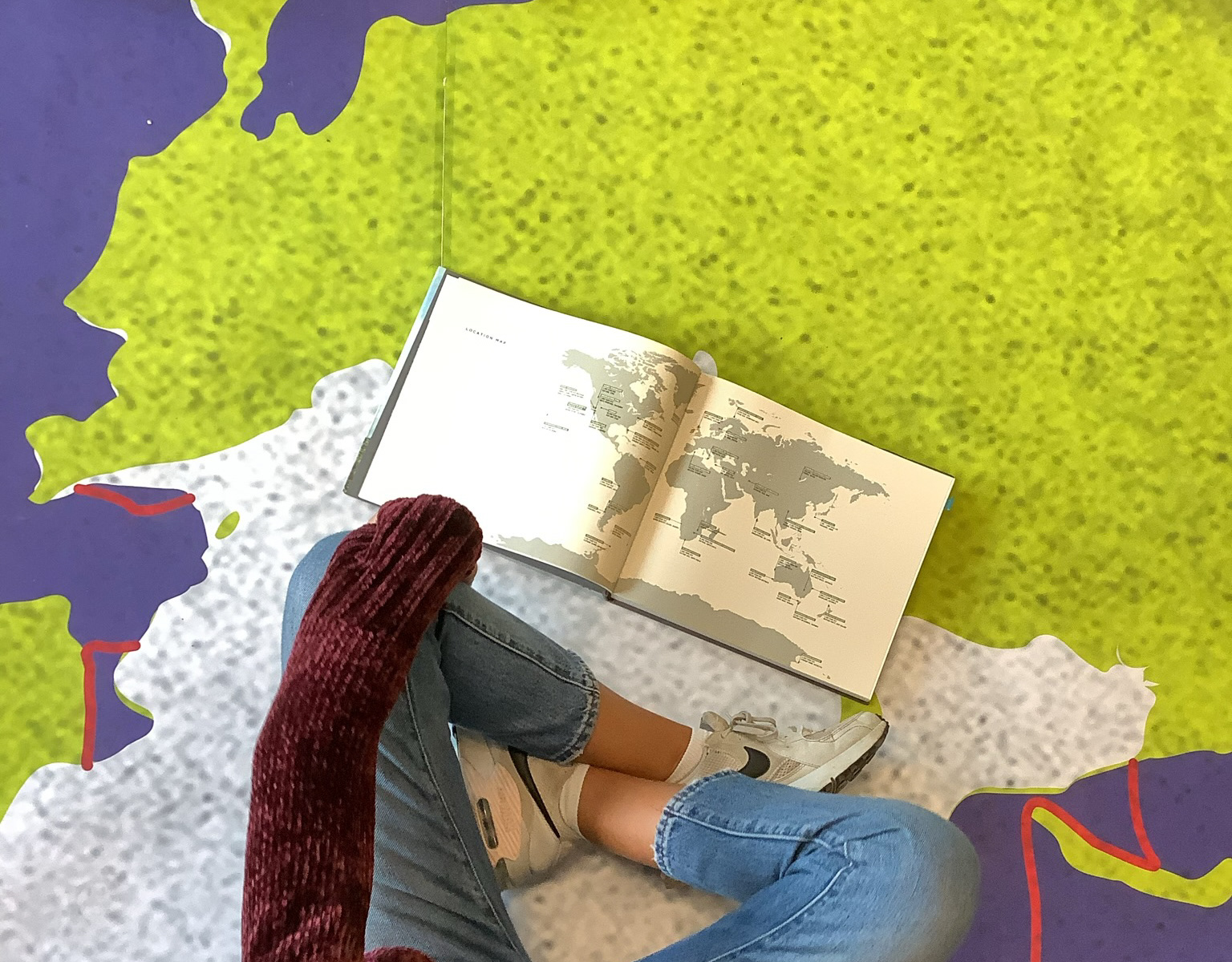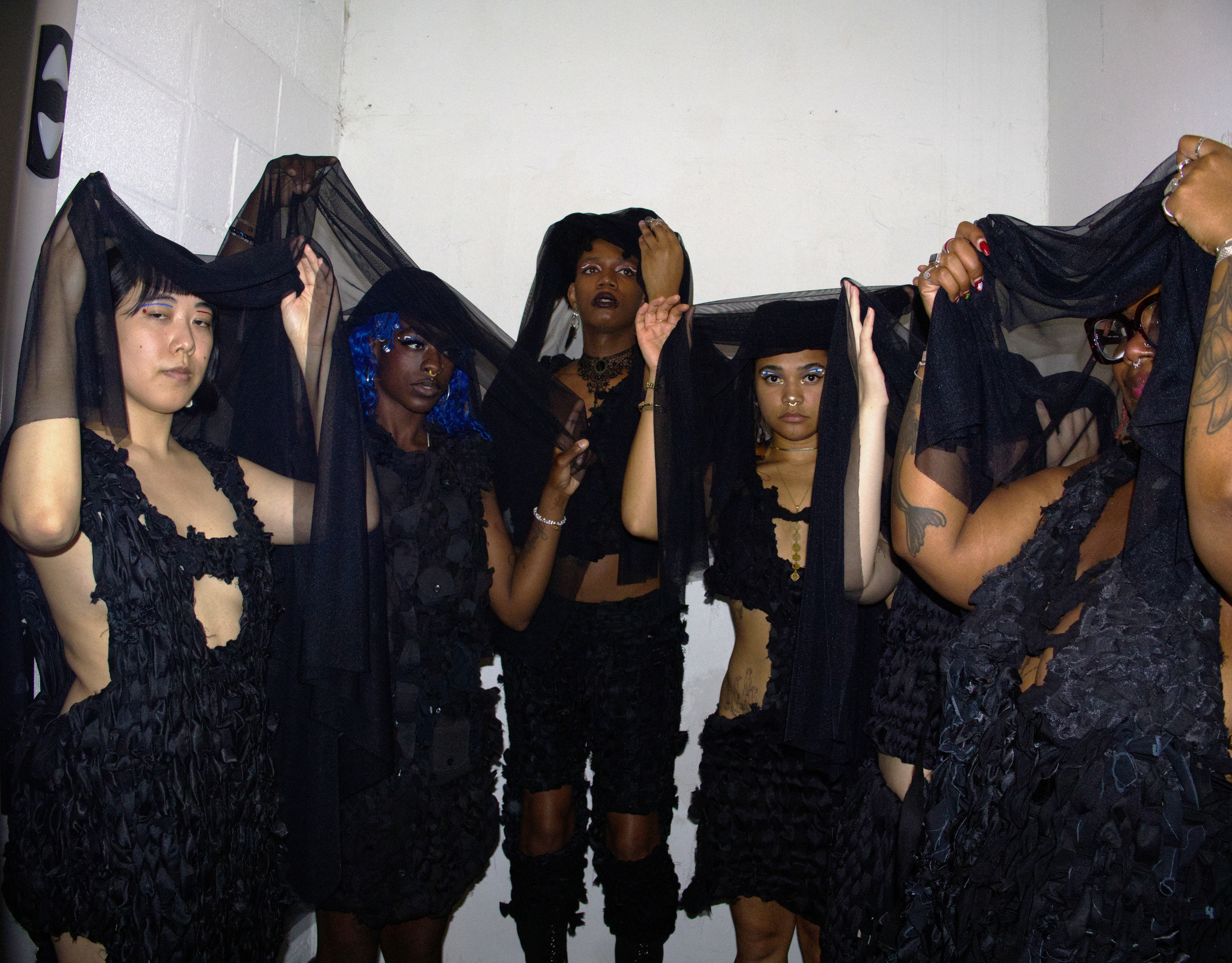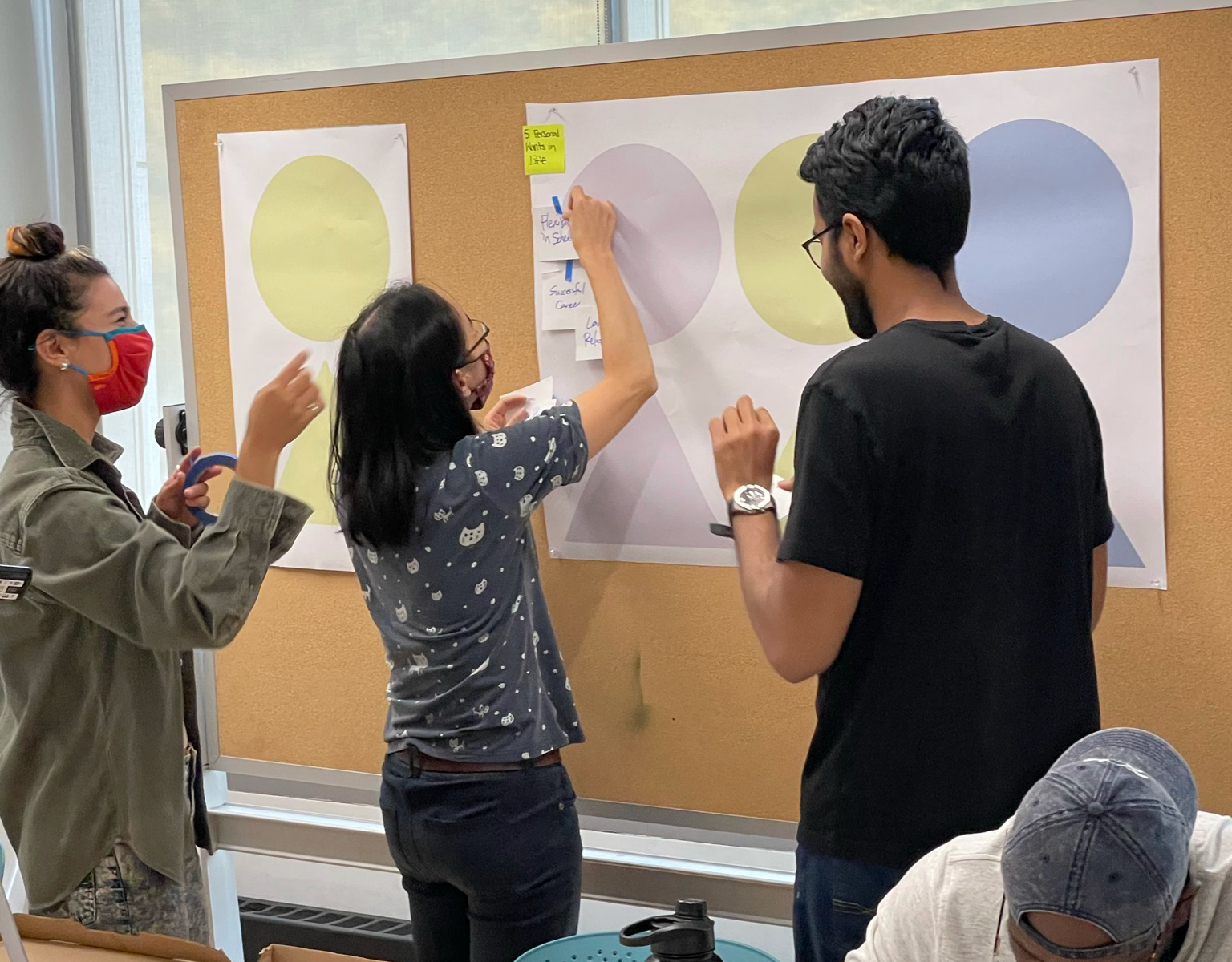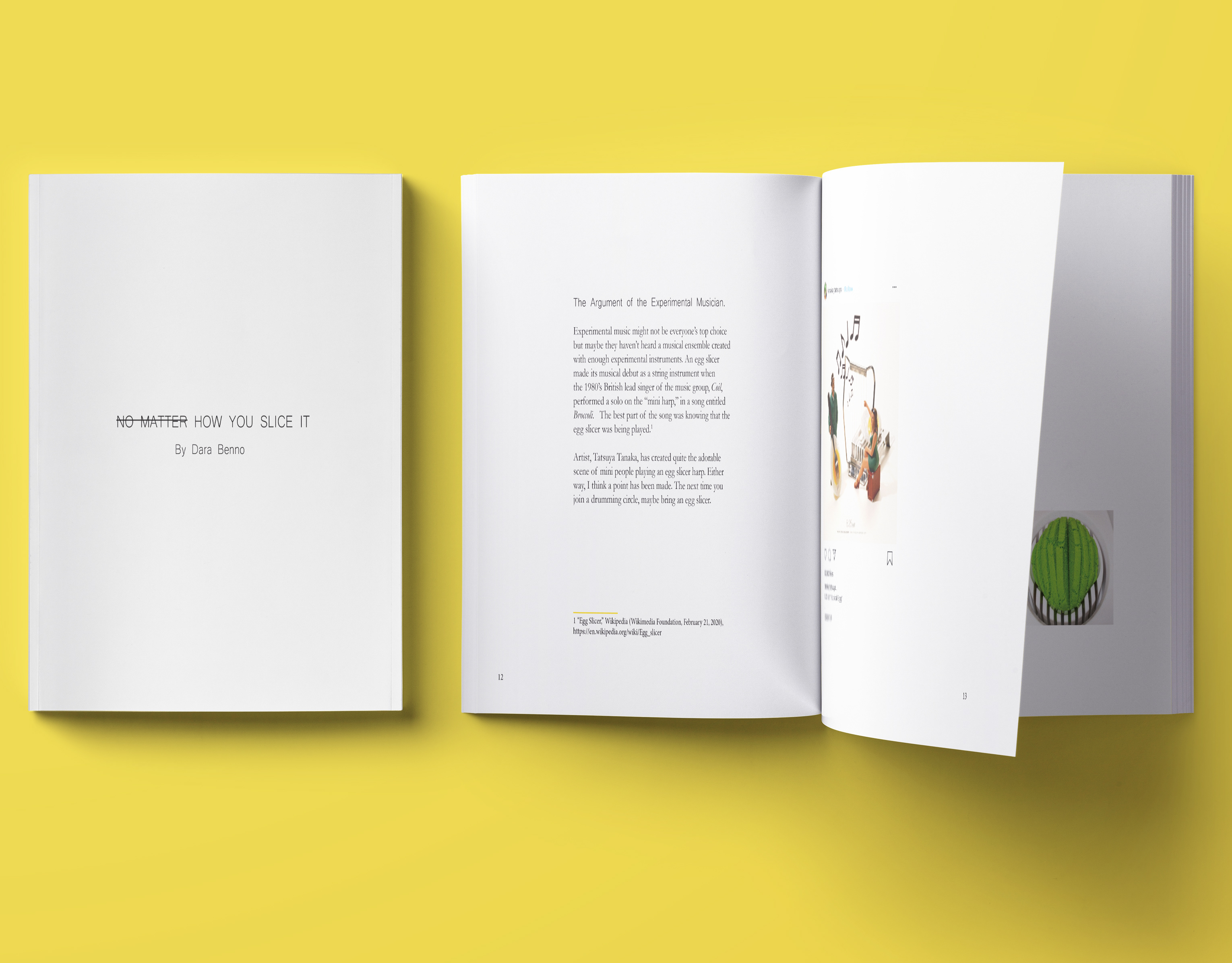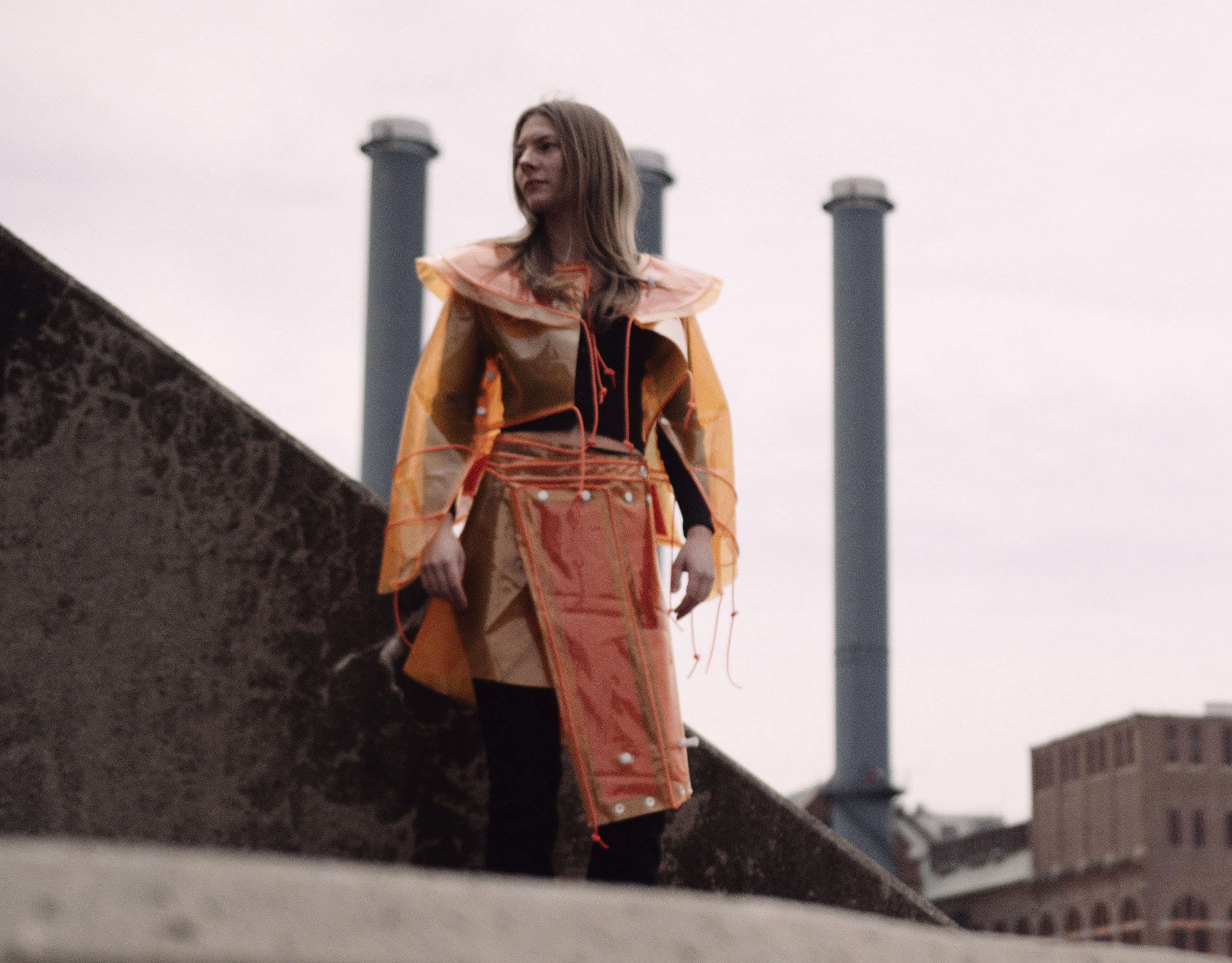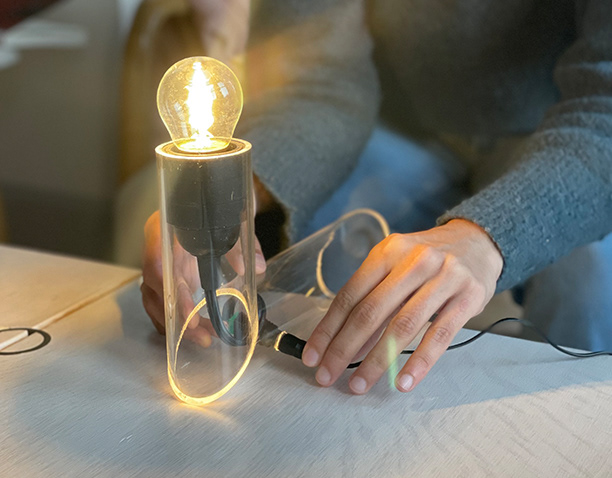How can lifestyle objects act as a reminder for accountability?
If human activities are the driving force behind the rapid climate change we are experiencing today (NASA), then why aren't people taking accountability for these detrimental actions? If reminders of accountability are incorporated into daily life through a designed friction, people may feel more of an obligation to make active strides toward climate-positive actions. If the objects that we own resemble a personal commitment to how we identify as contributors, activists or advocates of the climate crisis, then we can start to create a system within our lives to help hold us accountable for our daily decisions and long-term actions.
The Glow Rug is a daily reminder of accountability for simple actions one can take to help combat climate change. Through putting the rug in one's home, object ownership becomes a symbol of commitment toward climate-positive actions that a particular individual believes they would take in daily life, like conserving energy, limiting single-use plastic, etc. With white stripes that glow in the dark and guide someone to specific areas of their home, the design of the rug is a consistent reminder of this commitment while supporting less energy consumption at night. When displayed in areas of the home that guests would interact with, the Glow Rug also helps to strike up conversation with others about what we can do collectively and how we can hold one another accountable for behaviors that may otherwise go unnoticed.
Tufted Glow Rug prototype shown half in daylight and half in the dark.
Glow Rug rendering as entryway runner in a home setting.
Model: Katelyn Wright
Challenge
Many people find themselves living in a duality of association and dissociation to matters that require immediate attention, like climate change. This is due to factors including and not limited to feeling overwhelmed by the severity of the issue, feeling entitled to a certain amount of control over the natural world, lack of regulation and policy change by those in power or living a chaotic lifestyle that leads to lack of follow-through on intended action. So how can we make sure we don't persist in dismissive behaviors and instead, live our lives the way we intend?
Research + Insights
If our perceptions of ourselves don't match who we are in reality, then where is the disconnect?In an experiment from 1972 observing littering patterns, 95% of participants said they would pick up trash they found on the ground. Unfortunately, it was proven that "the intention to do something does not usually predict the associated effective behavior" (Ghozlane Fleury-Bahi et al.) given the fact that less than 2% of the participants actually picked up the trash.


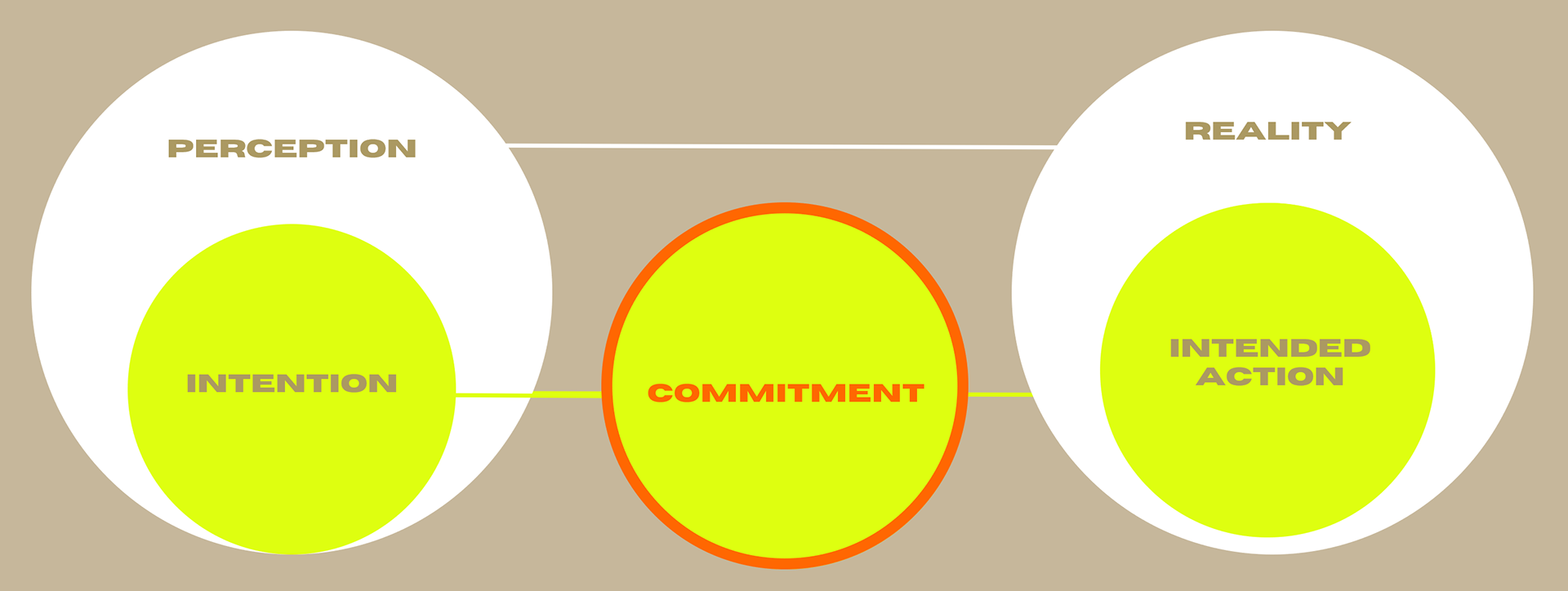
Above : Depiction of Intention-Action Gap
Below: Linear depiction of how commitment can lead to behavior change
With the need for active decision-making to predict and determine behaviors in actuality, a form of "ahead of time dedication" to intention is necessary. Commitments allow for positive connections to be made between a person and their intended behaviors, acting as a symbol of the type of person one wants to be, while producing an optimistic and hopeful cognitive effect in the form of empowerment to pursue and live out one's true identity.
Opportunity
User journey of objects as forms of commitment to follow through with chosen behaviors.
With chaotic lifestyles and increasing responsibilities as time goes on, people rely on convenience to make daily life more manageable. If we are considering introducing a form of commitment as an agent for change, it needs to be easily accessible and inserted into familiar routines. How can convenient commitments be integrated into our existing lifestyles that act as reminders for the people we perceive ourselves to be through the daily actions we take?
Design Process + Outcome
When thinking about "convenient commitments," I wanted to design an object that felt familiar and brought a bit of comfort through the user interaction. Given the extremity of the social and environmental issues caused by global warming, the tactile properties and emotional relationship with the designed object play a relevant role in making sure that there are no added feelings of distress and anxiety during use. Having previously researched the nostalgia, familiarity and comfort many people associate with rugs, I decided to pursue a series of experiments in order to test how a rug might serve as a reminder of accountability for climate-positive actions. An added challenge was to gauge whether this reminder would be successful through a design motif, mixed materiality and/or particular functionality.
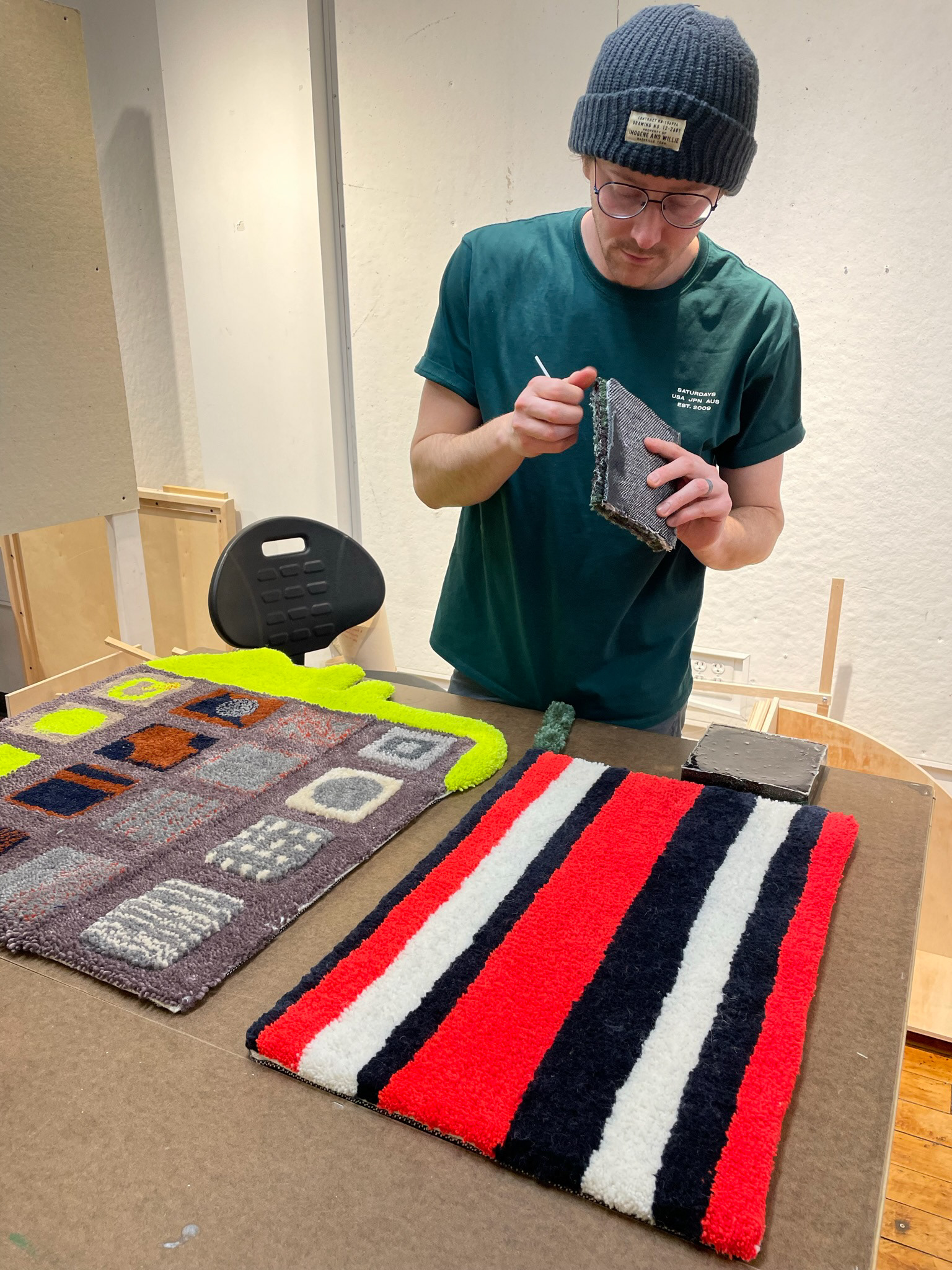
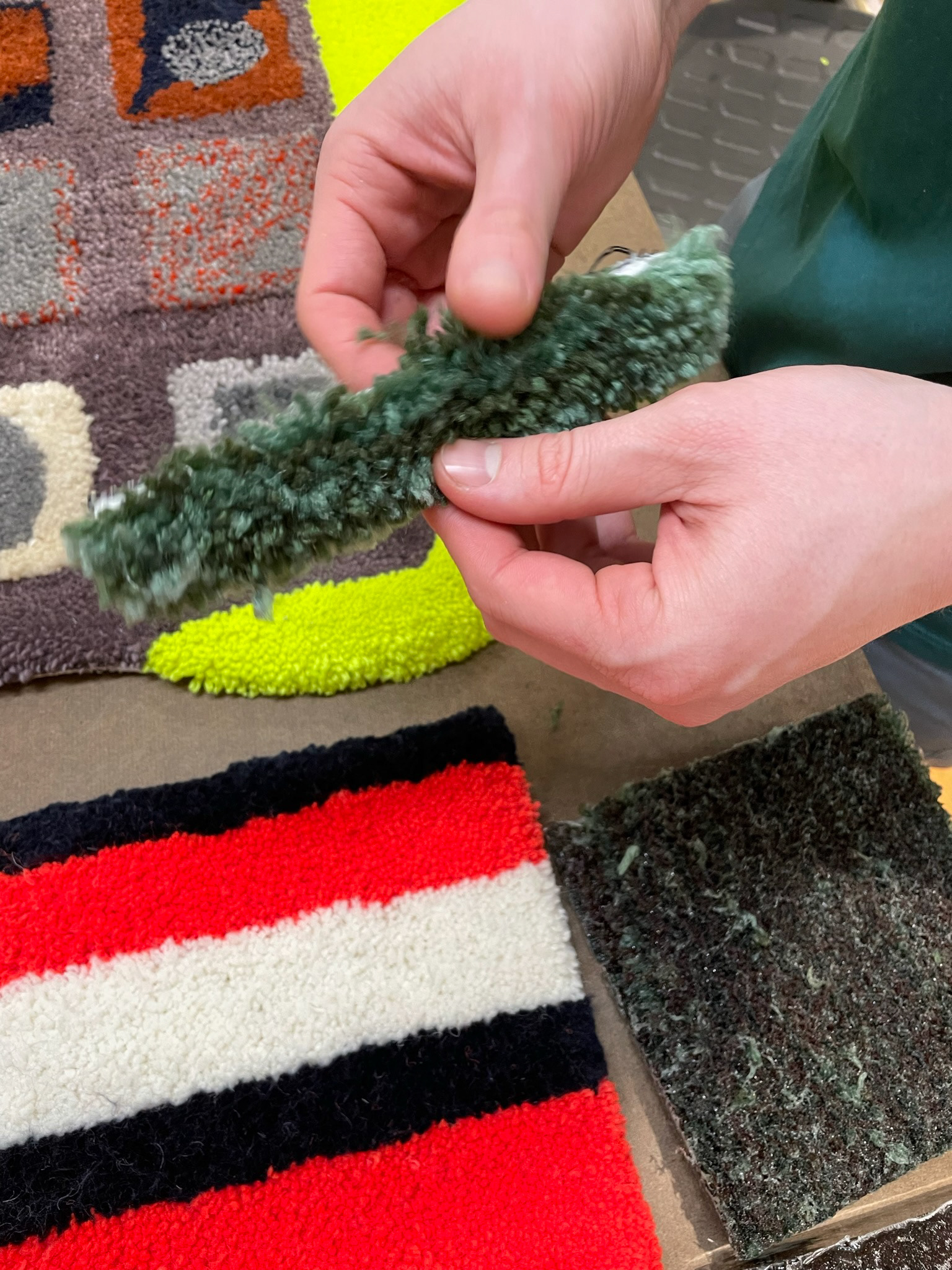

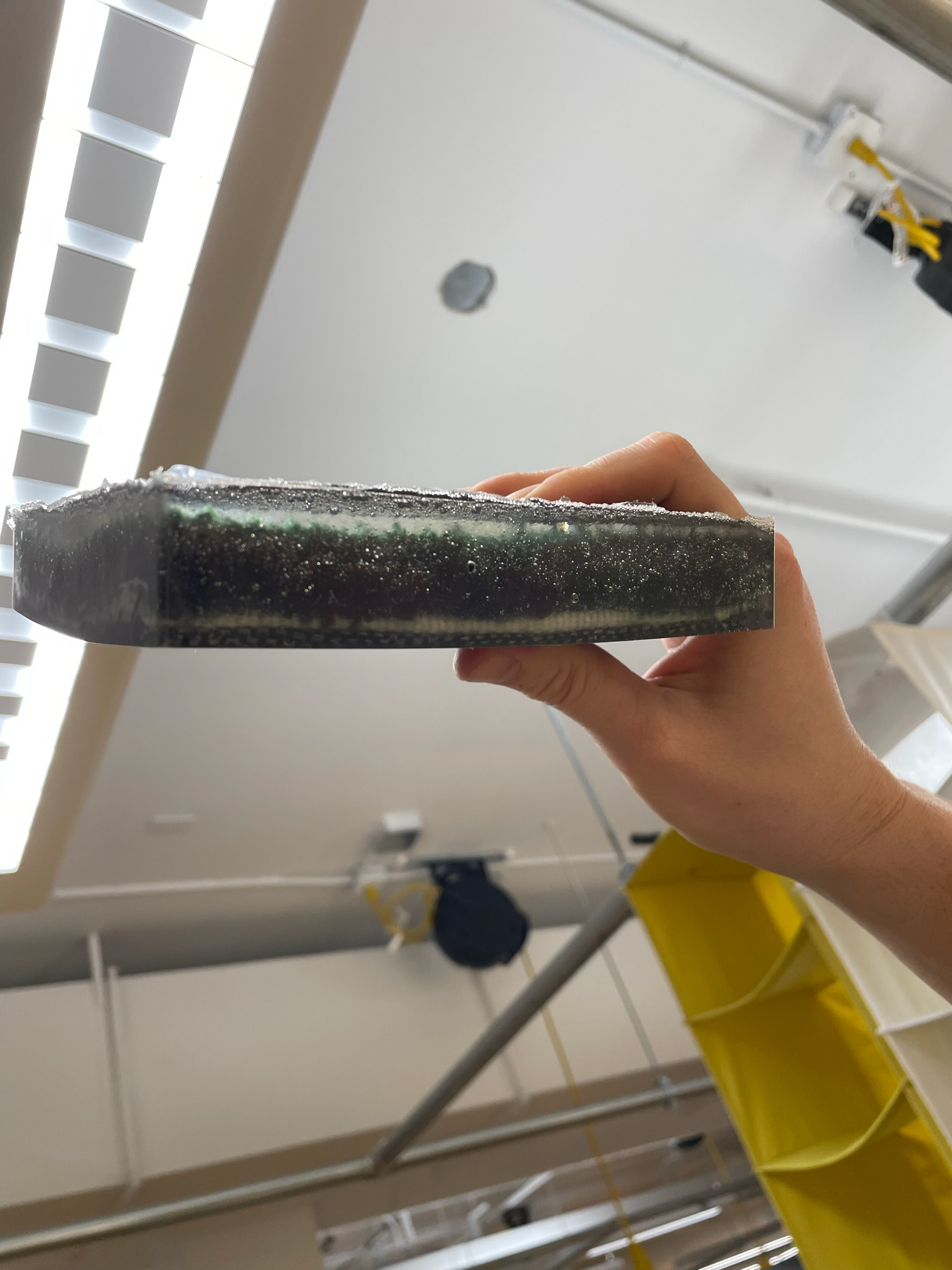

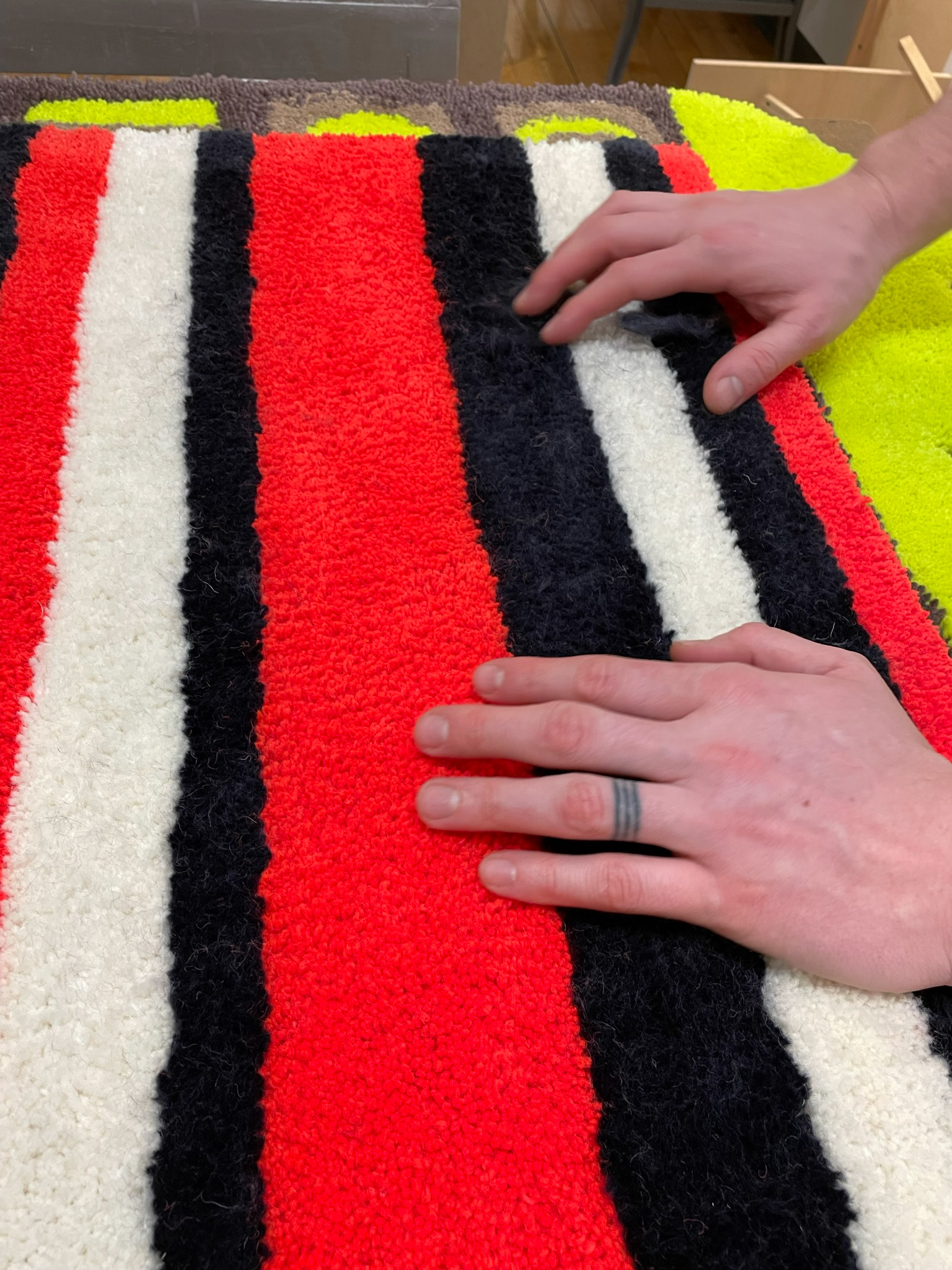
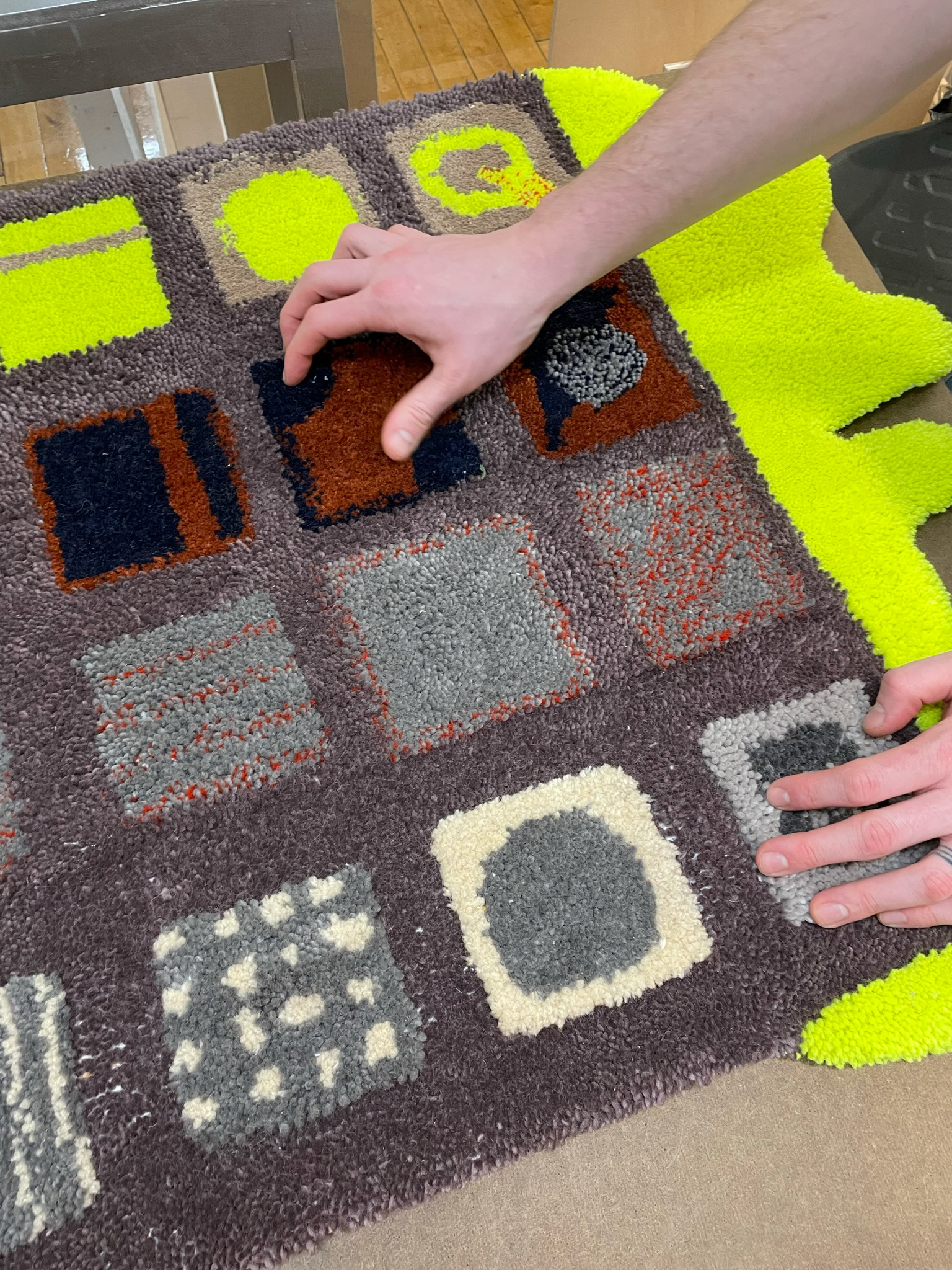
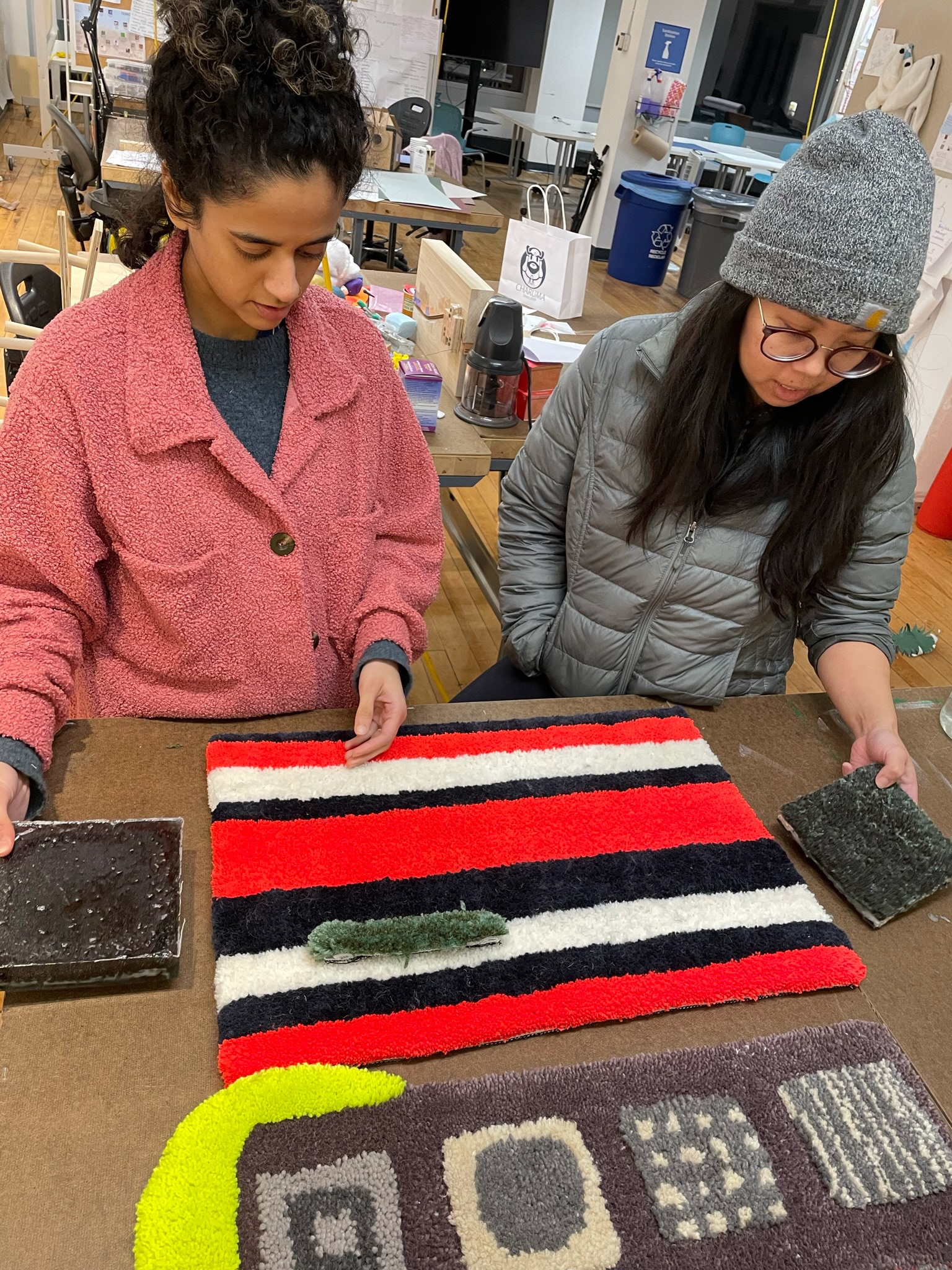
User testing of rug experiments including varying pile heights and types of yarn and yarn encapsulated in resin
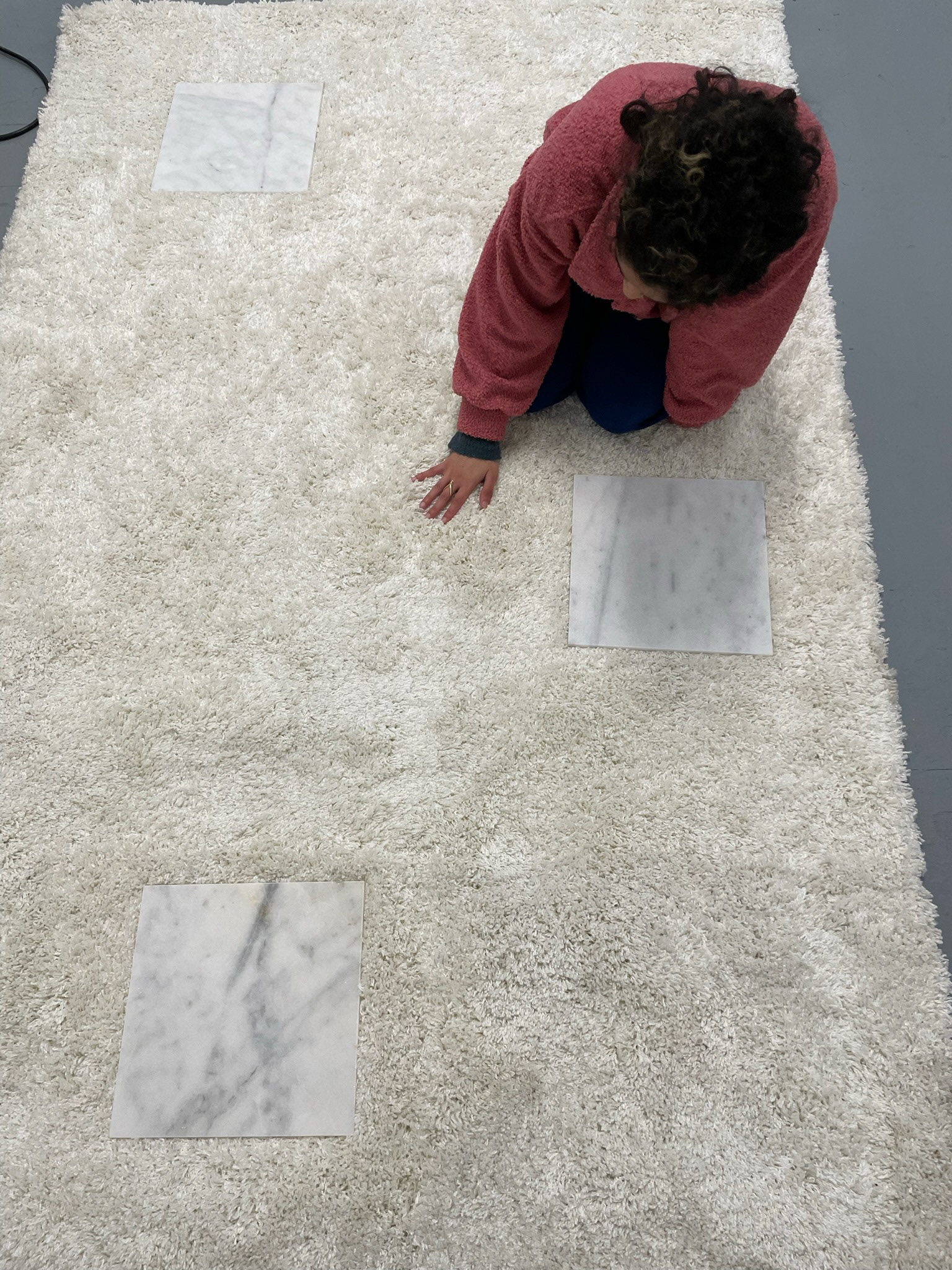
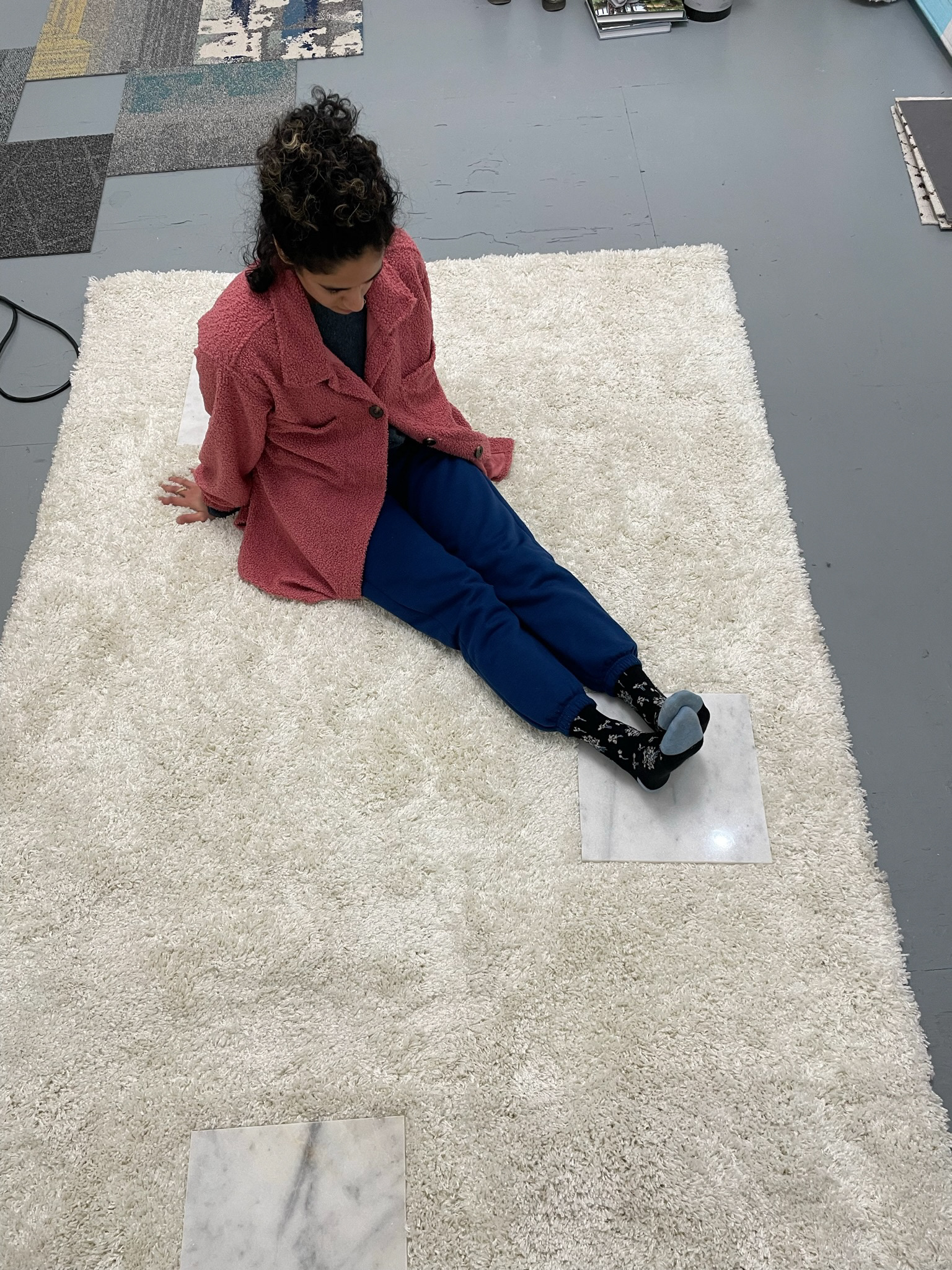


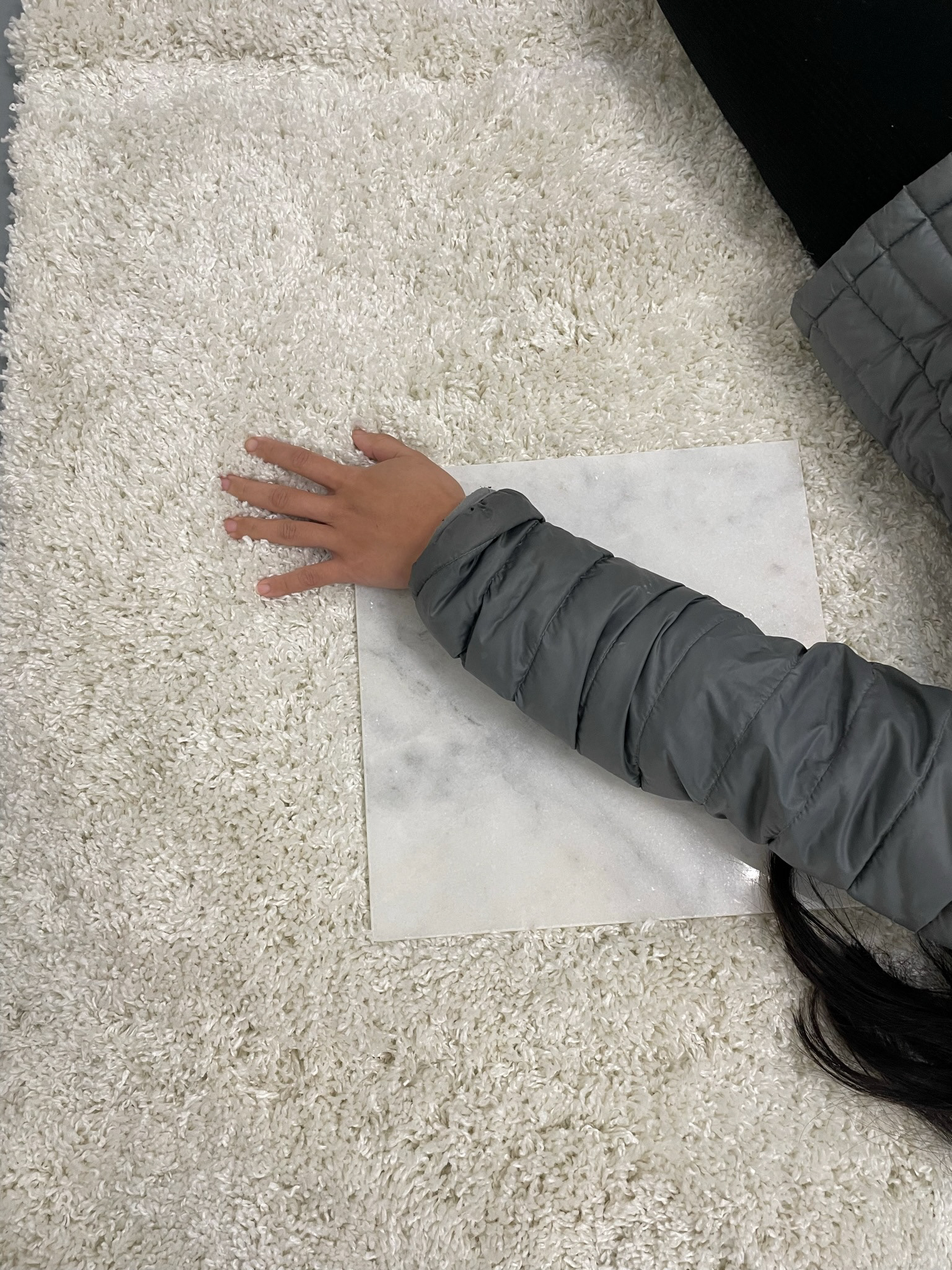
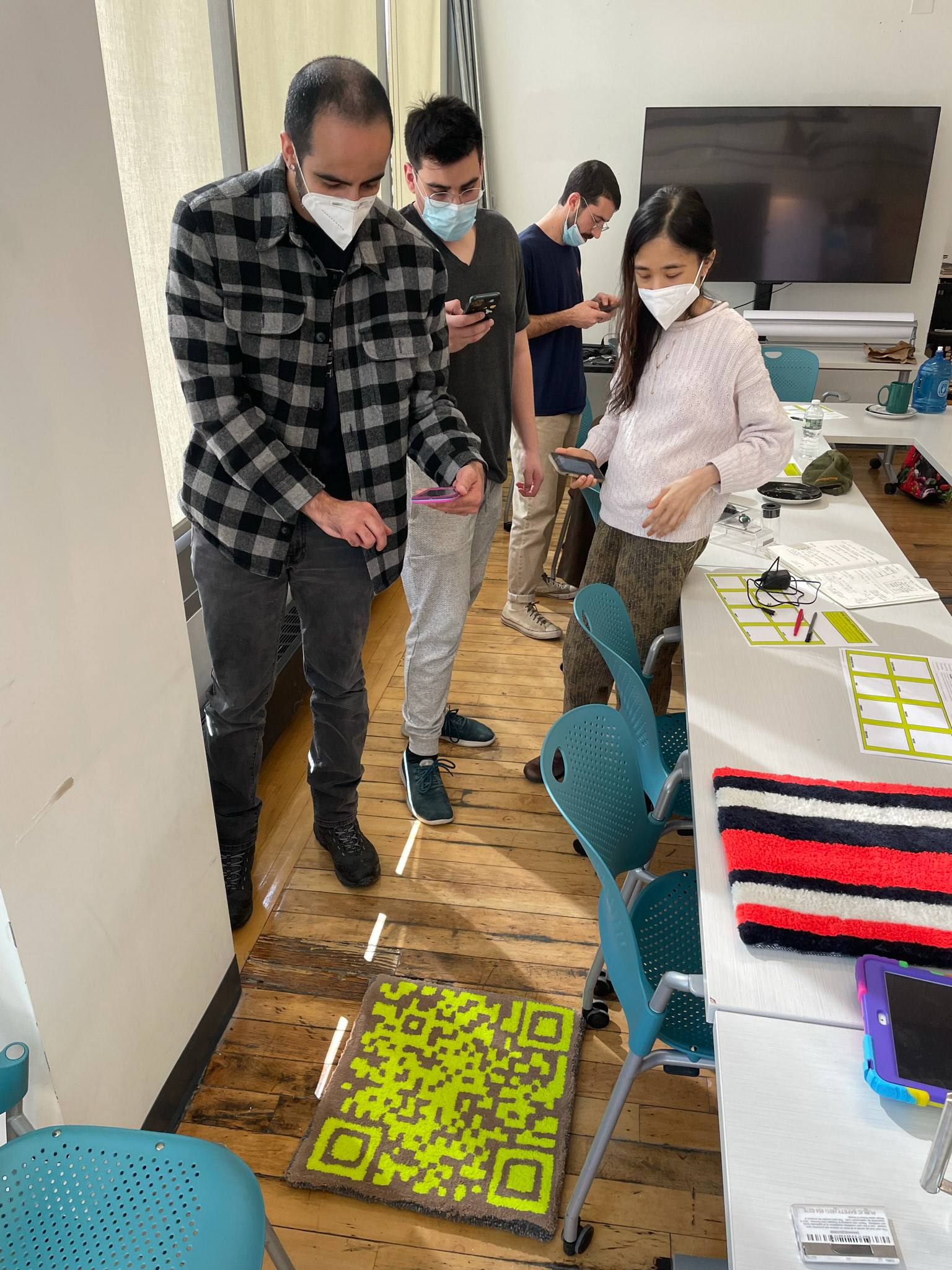
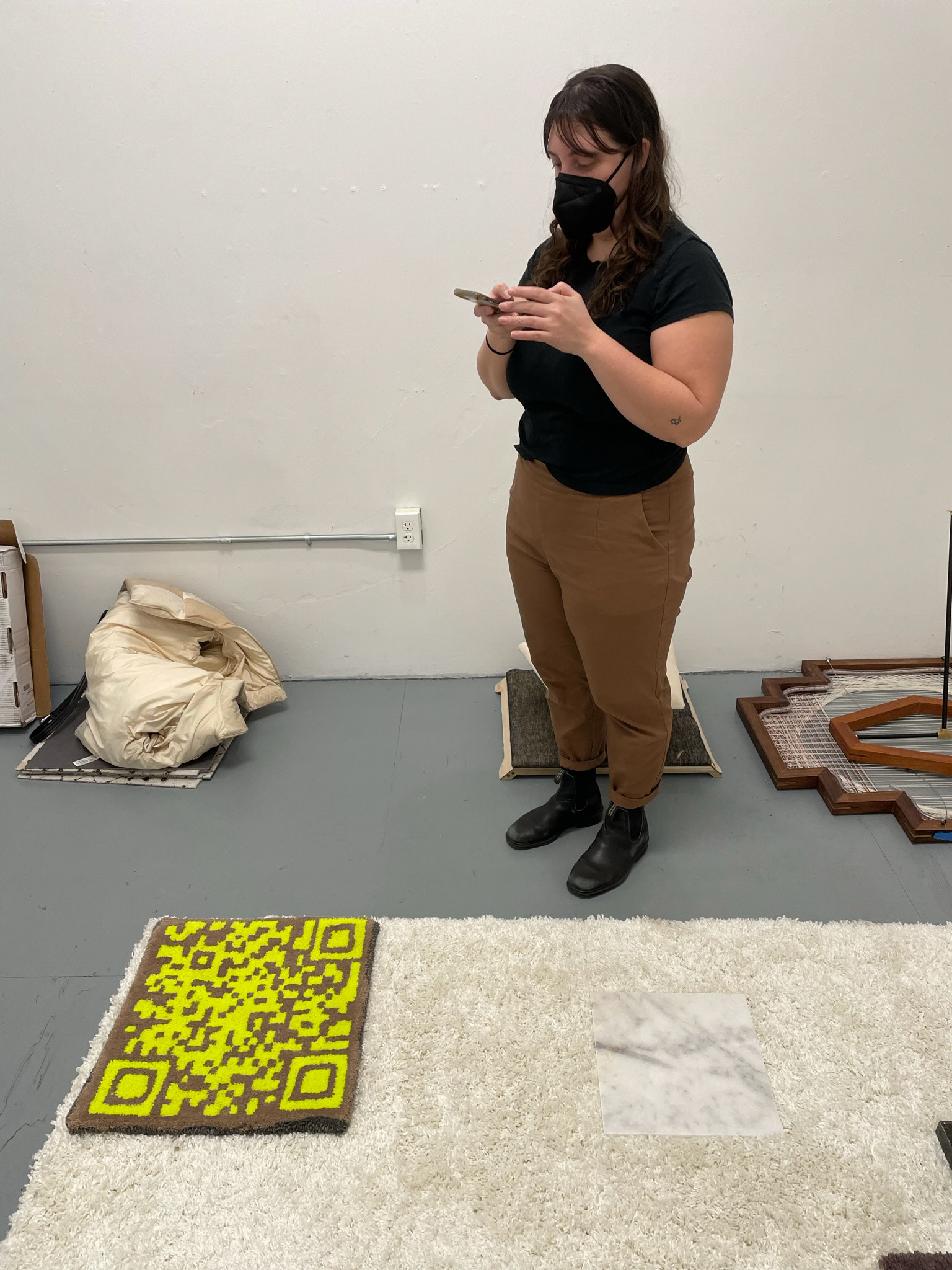

Additional experimental trials included altering existing rugs to incorporate hard and cold material components, like marble tiles, that might facilitate thinking about melting ice. For a more forward approach, I tufting a QR code rug to serve as a way to grab attention toward something unusual and interactive, drawing in passersby to engage with an object they might otherwise dismiss and directing them to an online Reddit forum on the topic of climate change. Scan the QR code for a peek!
The most excitement from participants testing the series of rugs was from the QR Code Rug and the Glow Rug as both pieces had a particular function that was easy to understand and added to the standard function of a decorative floor piece. Choosing vibrant colors and creating motifs that were attractive contributed to this response as well, especially with the Glow Rug, which at first was not known to glow in the dark but once taken home for a few days by each person, became a pleasant surprise!
User testing of mixed media rug with marble tiles and tufted QR Code Rug
To further investigate the commitment theory, I asked some people to live with the Glow Rug for one week. In order to test behavior change, I prefaced the experiment by asking questions related to living "an environmentally conscious lifestyle," to which all of the participants expressed an interest. When we came together for a debrief, I offered refreshments and observed whether people chose disposable or ceramic plates and cups. As we sat around the table discussing lifestyle choices, I noticed that the participant who had expressed previously being vegan and living a self-sufficient lifestyle in a small Californian community was the only one who had chosen a disposable plate. They expressed their disappointment in how people perceive themselves to be a certain way based on the lifestyles they claim as their own, yet often act in hypocritical ways when no one is watching — this being a large part of the reason why they ended up leaving the "sustainable" commune. Although living with the rug for one week didn't stop this person from choosing a disposable plate over a ceramic plate, I was able to identify a perfect example of the gap between intention and action as well as perception and reality.


